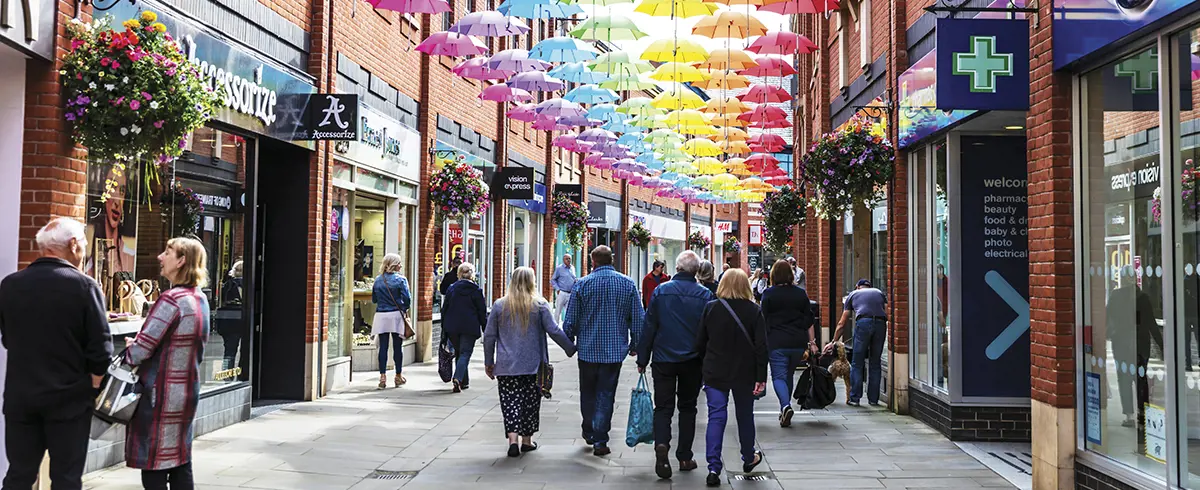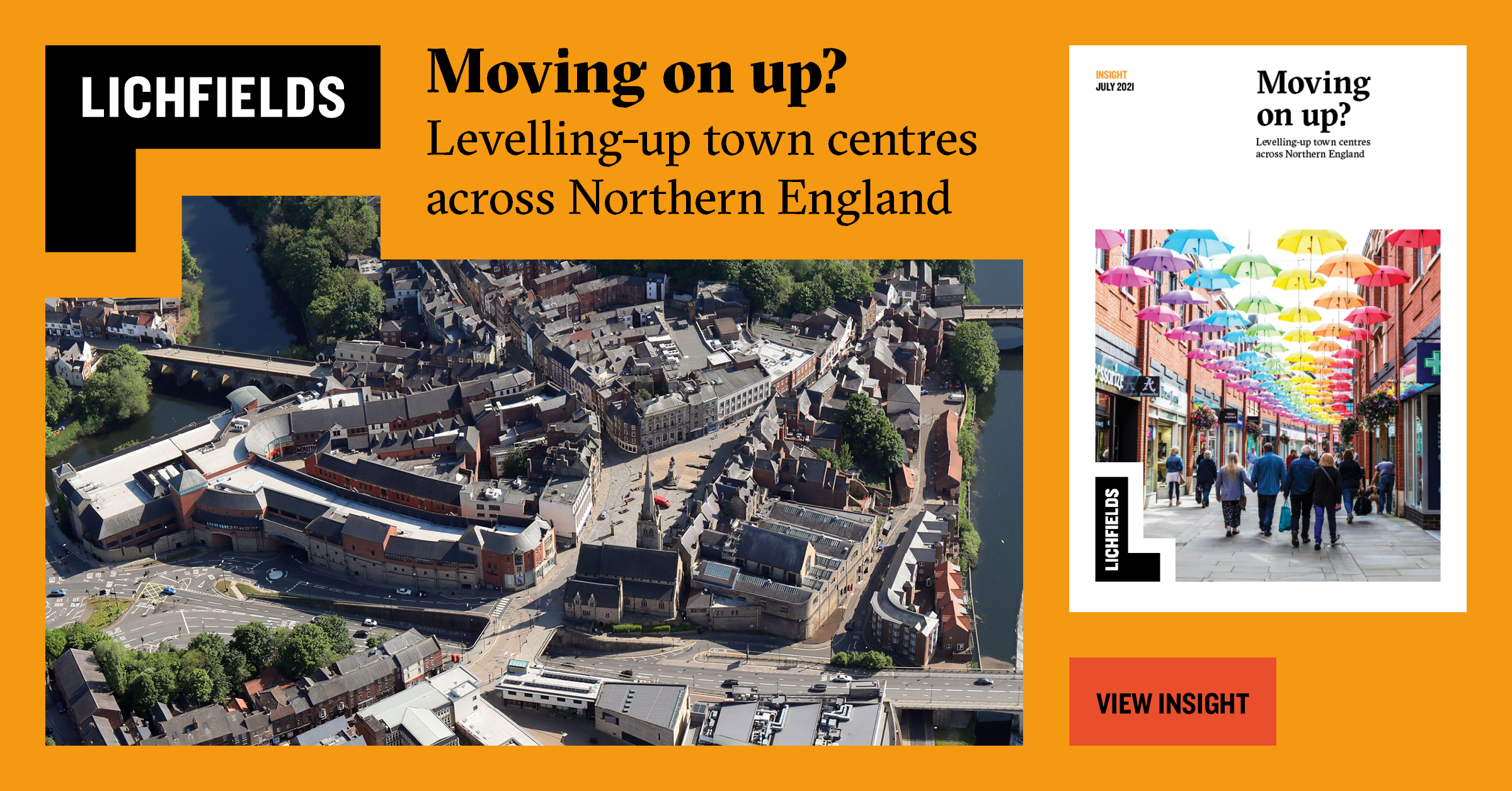It has, without question, been a challenging year for our town and city centres. As the global pandemic continues and lockdowns come and go, a raft of the nation’s most famous retailers have disappeared from high streets across the country. As in the rest of the developed world, the Covid-19 pandemic has been a ‘game changer’ for the sector. With the growth in online shopping over the last decade or so, most centres had already devised strategies based on re-focusing their offer away from retailing and toward a leisure and food and beverage-based offer.
However, successive lockdowns have acted as a catalyst in speeding up changes in shopping behaviour, and impacted directly on the leisure and hospitality sector to the extent that it is now quite unclear how centres will function as restrictions ease.
In the North of England, our town and city centres have suffered more than most in recent years. While Covid-19 has sped up the process of change, even prior to the pandemic many centres were already experiencing major challenges due to both changes in shopping behaviour and weak underlying economic conditions.
The Government’s Levelling Up Fund Prospectus, published in March 2021, identifies a total of £4.8 billion to be invested over the coming years to support town centre and high street regeneration, local transport projects, and cultural and heritage assets across the country.
In addition to the Levelling Up Fund, as part of the Government’s wider package of interventions, there are three key funding streams, which have already seen a great deal of uptake across the North:
- Future High Streets Fund – This fund seeks to allocate £830 million to help deliver transformative changes to struggling high streets;
- Towns Fund – 100 cities, towns and areas have been invited to bid for part of this £3.6 billion fund designed for proposals which drive economic growth. In many places, town centres are integral to these schemes; and
- High Street Heritage Action Zones – Seeking to transform High Street buildings which can help to fuel economic, social and cultural recovery.
Town centre stakeholders are responding with a range of radical and ambitious projects. These include strategic interventions by local authorities, including through the acquisition of shopping centres and use of Compulsory Purchase Order powers.
With innovative and ambitious strategies now in place in many towns – and Government funding available to support delivery - there are grounds for optimism over the future of our town centres.
Lichfields’ Insight, ‘
Moving on up? Levelling up Town Centres across Northern England’, reviews the various different funding bids currently under consideration. Using this research, we have identified six key themes which underpin the different plans and strategies currently under consideration. These are:
- Health and Wellbeing - With the demise of retail, we need to find a reason to draw visitors into town centres. As well as more pleasant and healthy outdoor spaces and experiences, this could also involve locating other essential services close to transport hubs where they can help to maintain footfall.
- Education - Universities and colleges have long been key parts of daily life in our city centres. Opportunities exist to locate student populations in the heart of these centres, where they can contribute to vitality and viability.
- Tourism - Many of the North’s town and cities have fascinating visitor attractions and dramatic physical and geographical environs. An ambitious and coherent tourism strategy should seek to make the most of these unique assets to drive trips to their town centres.
- Heritage - The North has a rich and varied history, the remnants of which live on in many of our town and city centres. They can make a real contribution to the environment and attractiveness of these towns as visitor destinations.
- Digital and creative - Whilst retail may never return to its previous levels, flexibility is required to re-purpose the floorspace left behind by these vacancies. Utilising new funding streams and planning reforms, space should be made to accommodate innovative small businesses which will contribute to the vibrancy and culture of town centres.
- Town centre living - As retail space recedes, we need to ensure our town centres remain attractive places to live. As well as making an invaluable contribution to housing supply in our urban areas, maintaining a meaningful 24-hour population in town centres will in turn drive demand for services and facilities which contribute to the vitality and viability of the centres.
With these themes in mind, our Insight provides evidence across the North of innovation, optimism and ambition in the town centre sector, which means the future may not be as bleak as many sceptics would have you believe.




